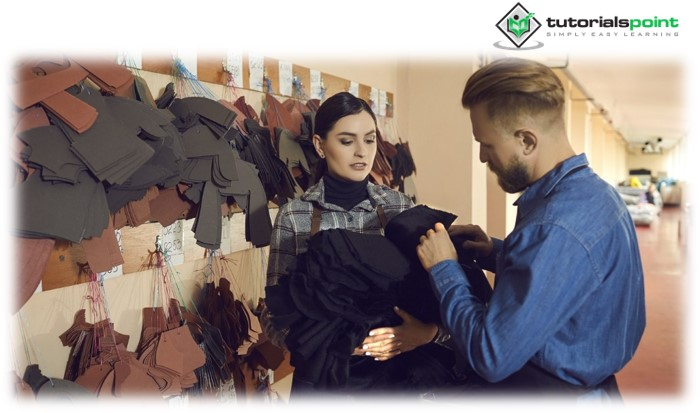

An attractive pair of shoes delivers comfort without sacrificing style. Although it’s simple to concentrate on the shape or style of your shoes, the material is what matters most. The design will work or fail based on the material. It can give you the impression that you’re walking on clouds or the support you require to stand all day. Here, the five most popular materials for shoes are discussed, including various kinds of leather, synthetics, and textiles.

The logical step in addressing sustainability is material selection. The remaining phases of a shoe’s lifecycle are impacted by the materials that are selected. This section attempts to highlight the materials that are most frequently used in the footwear industry and to enlighten readers about the harmful effects they have on both humans and the environment. Your shoemaking ideas come to life thanks to the footwear materials you choose for your shoe design! You’ll discover that the materials used to make shoes are more important than the shoe pattern itself. The choice of the right materials that can withstand the demands of shoemaking requires great care on the part of the shoe designer. The performance and manufacturing standards for footwear must be met. It is not acceptable to use beautiful materials that fade in sunlight or rip during prolonged use.
The flexibility and toughness of leather make it as strong as it is soft. Due to its elastic nature, it may be stretched while still preventing tearing and abrasion. Its combination of breathability and heat insulation aids in temperature control. Because of all of this, leather footwear moulds to the wearer’s feet better than any other type of footwear material. Therefore, it should come as no surprise that leather is one of the most widely used materials by footwear manufacturers, especially when creating men’s dress footwear.
Textile fabric is also frequently used to make footwear. Textiles come in a huge variety of colours and styles, much like leather. There are a variety of fibres, denier (or fabric weight), weaves, and knits that can be used in textiles. Cotton, polyester, wool, and nylon are the textiles that are most frequently used to make footwear.
There are additional textile footwear types made of rayon, lycra, and polypropylene. The variety of styles and designs available for textile footwear is one of their main benefits. When deciding whether to own or use a textile, one must also take into account its physical characteristics, such as variances in breathability, support, and temperature management (i.e., hotness or coolness).
Whatever name synthetic materials go by—PU leather, synthetic leather, or simply synthetics—they are always man-made composites of two layers: an outside surface bonded to a backing layer formed of polyester fibers. The same synthetic materials that are used to build footwear are also used to create comfortable, budget-friendly sports footwear. The colours and textures of synthetic materials are as varied as those of their textile counterparts. The quality and durability of the resulting synthetic are influenced by factors in the composition of the two layers of synthetic materials, such as the type of adhesion method employed, such as a wet or dry process, or the type of polyester used for the backing, such as woven or non-woven.
When compared to other types of footwear, synthetic footwear has the advantage of being relatively inexpensive for both the maker and the user. However, because it is less resilient than leather and cloth, synthetic footwear tends to age more quickly and require replacement more frequently.
The most typical application of rubber in footwear is for the soles. Although it is not the only material used to make outsoles for athletic footwear such as tennis and running shoes, it is one of the most common. While polyester has traditionally been used to make the majority of footwear rubber, natural rubber, which is better for the environment, is becoming more and more popular as a substitute.
The most popular substance used to offer support in the uppers of footwear of all types, whether they are made of leather, cloth, synthetic materials, or even rubber, is foam. There are numerous types of foam that can be used for this, but they all fall into two categories: open cell and closed cell. All foam is made from plastic. In closed-cell foam, these open cells are sealed, preventing the gases inside them from escaping. In open-cell foam, the material is permeable, allowing water and air to pass through. In comparison to closed-cell foam, open-cell foam, commonly referred to as KFF or KF foam, is typically softer and constructed of polyurethane plastic. The collars and tongues of footwear frequently include open-cell foam. The most open of the numerous varieties of open foam is reticulated foam, which is widely used to design ventilation elements in footwear. A denser substance frequently used to create footwear midsoles is closed-cell foam. Polyurethane, polyethylene, EVA foam,neoprene, and latex are examples of closed-cell foam types. Each kind of closed-cell foam has unique characteristics like flexibility or waterproofness.
Choosing the appropriate footwear to meet one’s current demands is greatly aided by awareness of the various materials that are commonly used in footwear. One may wear every pair of footwear they purchase with pride if they are aware of the type variances, quality and maintenance issues, and potential advantages and disadvantages of each type. Which material works best for shoes? The answer to this question is a difficult one. It will depend on the type of shoes you buy, where and when you plan to wear them, and where and how you walk. When deciding which material to look for, it’s important to consider the type of shoe.